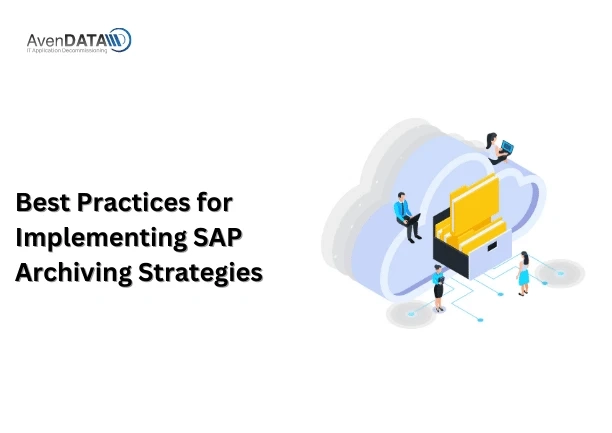Introduction:
In today’s data-driven world, organizations are faced with the challenge of managing vast amounts of information while ensuring data integrity, compliance, and system performance. SAP archiving offers a solution by efficiently storing and managing data, optimizing system resources, and enabling regulatory compliance. In this blog post, we will explore the best practices for implementing SAP archiving strategies to help organizations effectively manage their data and achieve maximum benefits.
1. Define Clear Archiving Objectives:
Before diving into SAP archiving, it’s essential to define clear objectives. Identify the specific data sets, business processes, and regulatory requirements that need to be addressed. Set realistic goals and align them with the organization’s overall data management strategy.
2. Conduct a Comprehensive Data Analysis:
Perform a thorough analysis of your SAP system to identify data that can be archived. Determine data retention policies based on legal, regulatory, and business requirements. Categorize data based on its importance and relevance to ongoing operations.
3. Develop an Archiving Plan:
Create a detailed archiving plan that outlines the specific archiving objects, criteria, and schedules. Consider factors such as data volume, frequency of access, and storage requirements. Define archiving rules and ensure they comply with legal and regulatory frameworks.
4. Test and Validate Archiving Processes:
Before implementing archiving in a production environment, conduct thorough testing to ensure the process works as intended. Test archiving scenarios on a representative sample of data and validate the results. This helps identify any issues or potential risks and fine-tune the archiving strategy accordingly.
5. Monitor and Maintain Archiving Activities:
Regularly monitor archiving activities to ensure they align with the defined plan. Monitor system performance and storage utilization to optimize resource allocation. Perform periodic audits to validate data integrity, compliance, and system stability.
6. Establish Data Retention and Retrieval Procedures:
Define procedures for data retrieval when needed, ensuring easy access to archived data for audit purposes or legal requirements. Implement a robust search and retrieval mechanism that allows authorized personnel to quickly locate and retrieve specific archived data.
7. Stay Up-to-Date with SAP Archiving Best Practices:
Keep abreast of the latest SAP archiving best practices, industry trends, and advancements in archiving technologies. Attend webinars, conferences, and training sessions to gain insights and stay informed about emerging tools and techniques that can enhance your archiving strategy.
Conclusion:
Implementing effective SAP archiving strategies is vital for organizations seeking to optimize data management, ensure regulatory compliance, and improve system performance. By following these best practices, businesses can achieve efficient archiving processes, reduce storage costs, enhance data accessibility, and mitigate operational risks. SAP archiving, when implemented strategically, empowers organizations to unlock the full potential of their data while maintaining compliance and operational excellence.




